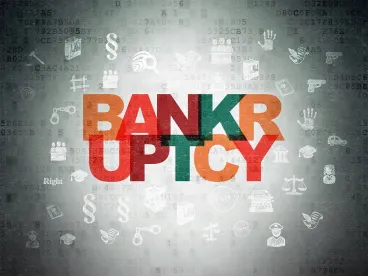In recent weeks, a move dubbed the “Texas Two-Step” has leaped from coverage first in publications geared only for the professional restructuring community, then to the mainstream press, then to hearings before the United States Senate Judiciary Committee, and now to a full-blown trial ongoing in a New Jersey bankruptcy court. For those not closely following the action (perhaps thinking this was merely some new dance craze), a brief explanation of the Texas Two-Step strategy, the arguments for and against its permissibility and the broader implications for the bankruptcy system as a whole are discussed below.
The first “step” of the Texas Two-Step occurs when a company undertakes a “divisive merger,” which splits it into two or more new companies. One of the new companies—sometimes colloquially referred to as “GoodCo”—is divested of some or all of the original company’s liabilities, while the liabilities sought to be shed are lodged in another newly-created company, referred to as “BadCo.” While most observers might view this scheme on its face to be of dubious legality—indeed, likely fraudulent—it is in fact permitted under Texas law (and the law of a number of other states), albeit with the proviso—at least in Texas—that any such merger may “not abridge any right or rights of any creditor under existing laws.” See Tex. Bus. Orgs. Code § 10.901. As explained in a recent (nonprecedential) ruling interpreting the Texas statute, the United States Court of Appeals for the Federal Circuit opined that “[t]his language indicates that a purpose of the statute was to enable mergers that did not adversely affect the rights of parties under preexisting contracts with the entities undergoing the mergers.” Plastronics Socket, Ltd. v. Hwang, 2022 U.S. App. LEXIS 883, at *8 (Fed. Cir. Jan. 12, 2022).
The second “step” of the strategy occurs when only the company which has been saddled with the liabilities—BadCo—files for bankruptcy, thereby shielding some or all of the assets of GoodCo from creditors while providing BadCo with the shield of the Bankruptcy Code’s automatic stay. Typically, there is a “funding agreement” between GoodCo and BadCo, which purports not to diminish the recovery which BadCo’s creditors would have received had the divisive merger not occurred. However, whether or not such funding is sufficient—or even illusory—goes to the heart of the controversy.
The reason why the Texas Two-Step has recently drawn vast attention—and the ire of many—is because it was used by multi-billion dollar pharmaceutical giant Johnson & Johnson to address an “explosion” of claims and a “deluge of litigation” against its Johnson & Johnson Consumer Inc. subsidiary (“Old JJCI”) resulting from the use of Old JJCI’s talc baby powder, which is alleged to have caused ovarian cancer and/or mesothelioma in thousands of individuals. Following, among other things, (a) a $4.69 billion verdict on behalf of only 20 plaintiffs reached against Old JJCI in one case (later reduced to $2.24 billion), (b) Old JJCI incurring some $4.5 billion in defense costs in just the past five years in connection with talc litigation, and (c) an average new ovarian cancer complaint being filed every single hour of the day, 365 days a year, from January 2020 through October, 2021, Old JJCI executed a divisive merger, putting its “Bad-Co”—named “LTL Management” (LTL being an acronym for “Legacy Talc Litigation”) (“LTL” or the “Debtor”)—into a chapter 11 bankruptcy proceeding in North Carolina.
Following the bankruptcy court granting motions filed by the North Carolina Bankruptcy Administrator and other parties—as well as the court’s own order to show—venue of LTL’s case was ordered transferred to the Bankruptcy Court for the District of New Jersey, where J&J has its headquarters, nearly all of its assets and its principal operations. In re LTL Mgmt. LLC, Case No. 21-30589 (MBK) (Bankr. D.N.J. 2021). Soon thereafter, the Official Committee of Talc Claimants (the “Committee”) filed a motion to dismiss the Debtor’s chapter 11 case on the basis that it was not filed in “good faith.” According to the Committee, “this is a textbook case for bad faith dismissal under applicable law in the Third Circuit.” The Debtor filed an objection to the motion and a trial began in the New Jersey bankruptcy court on February 14, 2022.
The Committee argued in its motion that the Debtor’s case was not filed in good faith, because
[t]he purpose of LTL and of this bankruptcy has been crystal clear from the outset: it is not to compensate creditors, but to protect J&J and its other valuable non-debtor affiliates. Specifically, this case was filed to shield J&J from liability for the production, marketing, and sale of carcinogenic products for decades, and to remove its valuable operating assets from the reach of a single group of creditors (the talc claimants). All of this, of course, without J&J and its operating entities having to subject themselves, and their assets, to the transparency and scrutiny of Chapter 11.
This is not what Chapter 11 is for. The purpose of Chapter 11, and of the powers and benefits granted by the statute, is “to further a valid reorganizational purpose.”
The Committee also claimed that J&J incorporated the Debtor in North Carolina, “a state in which it had no contact and no business until a month ago, in order to game the bankruptcy system and take advantage of the Fourth Circuit’s test for bad faith dismissal (which is one of the most stringent in the country).” According to the Committee, Chapter 11 is intended to give a debtor that wishes to reorganize a fresh start, but LTL has no need for a fresh start, since at the time of its bankruptcy filing, “it was barely two days old.” LTL “has no business, no operations, no employees, no funded debt, and no assets (except those set up for the purpose of manufacturing venue in North Carolina).”
The Committee averred that the Debtor’s bankruptcy case (a) serves no legitimate purpose, (b) was designed to provide a litigation advantage for non-debtors, (c) serves only to deprive one group of creditors of access to assets available to satisfy their claims, and (d) seeks to manipulate Texas law and the Bankruptcy Code in order to shield the Debtor’s healthy non-debtor affiliates from direct and indirect tort liability, which J&J has admitted it is capable of paying. “[W]orse still, it makes dying cancer victims, even those with a judgment, scratch, claw, and fight, potentially for years, to be compensated from funds that would have been available to those creditors just two days before the filing.”
Finally, according to the Committee,
. . . if LTL’s bankruptcy case is permitted to proceed, the floodgates would open for any company subject to mass tort litigation to slough off its responsibility via a Texas Two-Step and subsequent bankruptcy of the new subsidiary. Plaintiffs would no longer be able to rely on the tort litigation system, but would, even after having litigated for years, be subject to the shell game J&J is attempting here. This would abridge fundamental individual rights. The Debtor’s bankruptcy case should therefore be dismissed.
The Debtor, in opposing the Committee’s motion, argued that “[n]one of the Movants’ various arguments for dismissal of this case as a ‘bad faith’ filing is supported by the facts or the law.” The Debtor filed its chapter 11 case because of the “unrelenting and enterprise-threatening deluge of litigation,” with “the plaintiffs’ bar [having] asserted that it will continue to file claims for the next 60 years, which would yield hundreds of thousands of new ovarian cancer and mesothelioma claims,” any one of which “has the potential for an enormous plaintiff verdict.” Therefore, according to the Debtor, pursuing an “equitable resolution” through chapter 11 was the only feasible option:
Courts have uniformly acknowledged that filing a chapter 11 petition to equitably resolve tens of thousands of mass tort claims qualifies as a valid bankruptcy purpose, just as Congress recognized when it enacted section 524(g) of the Bankruptcy Code. No remotely analogous mass tort chapter 11 petition has ever been dismissed as a bad faith filing. Even the cases cited by the Movants acknowledge the differences between chapter 11 filings aimed at obtaining a “tactical litigation advantage” in a specific litigation and the need to equitably resolve a flood of mass tort claims of the type faced here.
The Debtor also defended the divisive merger—which it termed a “Corporate Restructuring”—by claiming that it did not “block” or “remove” assets “from the reach” of the talc claimants. “To the contrary, the Funding Agreement . . . assures that the Debtor has the same, if not an enhanced, ability to satisfy the Talc Claims as Old JJCI had prior to the Corporate Restructuring.” According to the Debtor,
The Movants deride the transaction and bankruptcy filing as the “Texas two-step,” but deliberately disregard that other states have analogous statutes permitting divisional mergers and the same result may be accomplished just as legally (although less efficiently) by other means. Allocating the Talc Claims to the Debtor prior to filing bankruptcy avoided a complex, value-destructive, and exponentially more costly bankruptcy harmful to thousands of Old JJCI’s stakeholders (e.g., suppliers, vendors, customers, and employees to name a few) and beneficial to no one, including talc claimants. Old JJCI is hardly the first mass tort defendant to enter into a corporate restructuring prior to a bankruptcy filing. None of those prior bankruptcy filings has been dismissed as a bad faith filing, and none of the Movants’ authorities supports dismissal.
As noted above, trial on the Committee’s dismissal motion is underway and there appears to be no clear precedent to guide the court. While several debtors have previously attempted to effectuate a Texas Two-Step, the issue of whether utilization of that strategy alone can serve as the basis for dismissal of the bankruptcy case as a bad faith filing appears not yet to have been adjudicated by any court.
Just a few days before the LTL trial began, a reportedly heated hearing was held before the Senate Judiciary Committee’s Subcommittee on Federal Courts, Oversight, Agency Action and Federal Rights. During the hearing, testimony was offered both for and against proposed legislation eliminating the “Texas Two-Step” from a number of witnesses, including a former bankruptcy judge, bankruptcy law practitioners, a law professor and a mesothelioma claimant. As the title of the legislation indicates, The Nondebtor Release Prohibition Act also addresses another currently highly controversial issue in bankruptcy jurisprudence—non-consensual third-party releases—which are under intense scrutiny, largely as a result of the Purdue Pharma case, where such releases were approved by the Bankruptcy Court for the Southern District of New York, then reversed by the District Court, and are now the subject of an expedited appeal to the Second Circuit Court of Appeals. The proposed legislation would not only eliminate non-debtor releases in chapter 11 cases, but it would also require bankruptcy judges to dismiss cases filed by entities that have taken on liabilities in a divisional merger within 10 years before the filing. While most commentators believe that passage of the legislation is unlikely, it has nevertheless resulted in both issues which it seeks to target being hotly debated and—at least with respect to the release issue—may have already influenced some recent bankruptcy court decisions.
At bottom, it appears that the Texas Two-Step firestorm is likely to continue burning for quite some time.




 />i
/>i

